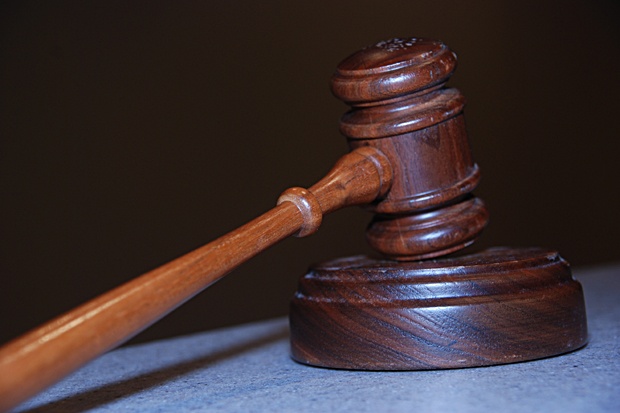eDiscovery Daily Blog
Biggest eDiscovery Challenges Facing Plaintiff’s Attorneys, Part Five
Editor’s Note: Tom O’Connor is a nationally known consultant, speaker, and writer in the field of computerized litigation support systems. He has also been a great addition to our webinar program, participating with me on several recent webinars. Tom has also written several terrific informational overview series for CloudNine, including his most recent one, Why Does Production Have to be Such a Big Production?, which we will cover as part of a webcast on May 29. Now, Tom has written another terrific overview regarding the biggest eDiscovery challenges facing plaintiff’s attorneys titled (oddly enough) Biggest eDiscovery Challenges Facing Plaintiff’s Attorneys that we’re happy to share on the eDiscovery Daily blog. Enjoy! – Doug
Tom’s overview is split into five parts, so we’ll cover each part separately. Part one was last Tuesday, part two was last Thursday, part three was Monday and part four was Wednesday, here is the fifth and final part.
Conclusions
Finally, I asked several of our stalwarts to address the questions I posed back in the Introduction to this article.
With regards to the question “Do symmetrical cases (both parties producing comparable discovery) differ from asymmetrical cases (one side has vast majority of discovery) that much in terms of strategy?”, Craig said:
“Plaintiffs mistakenly assume they don’t have anything to preserve, process and search. They often have much more than counsel appreciate yet lack wherewithal to deal with it. Plaintiffs’ lawyers who fail to bring the same diligence and skill they demand from the defense to their own client’s data are easy targets for costly do-overs and serious sanctions. Defense counsel often harbor the same mistaken assumptions about asymmetry and fail to exploit this pressure point. That luck won’t last, so plaintiffs’ lawyers better get on the stick when it comes to defensible legal holds, collection, processing and review.”
Craig had also addressed the question “Are plaintiffs more interested in expanding the scope of production (to get more potential evidence) or avoiding the old “document dump” because they don’t have the resources? Or does it depend on the type of plaintiff?” with his comments on shortsightedness by saying:
“… plaintiffs’ lawyers tend to rashly agree to almost anything to get something. They accede to bad protocols, shoddy searches and dumbed-down forms of production by being in too big a hurry to get their hands-on production and start taking depositions.”
With regards to the question “Are plaintiffs more motivated to request native files than defendants because they are more invested in using the metadata?”, all our experts agree that plaintiffs want native files more than defendants because they want the original metadata while defendants are far more likely to already have invested substantial sums in database technology into which they have loaded their data and can use that to screen their productions.
Lastly, with regards to question “Does the EDRM model seem more like a defense model than a plaintiff model, given that it is more focused on producing then presenting? Should there be a model for requesting parties?”, our experts felt it leaned towards a defense model not because it was more focused on producing then presenting, but because the people who first originated it and later promoted it were defense oriented so that was their natural inclination.
A larger problem for plaintiffs’ attorneys beyond the EDRM focus is changing their paradigm from documents to data. As Craig Ball noted:
“Plaintiffs’ lawyers are hamstrung by paper presumptions unsuited to a digital universe. Lacking insight into modern information systems, they don’t know how to fight back like coders instead of cavemen. So, they flail and whine that the production ‘just feels like it should be more’ without being able to articulate why and how or produce evidence to support their motions – crucially lacking the ability to educate the bench and secure relief. Plaintiffs get run over roughshod trying to argue what they need to prove.”
So, what do you think? Are you a plaintiff’s attorney? If so, what are your biggest eDiscovery challenges? As always, please share any comments you might have or if you’d like to know more about a particular topic.
eDiscovery Daily will resume with new posts on Tuesday, after the Memorial Day weekend.

Sponsor: This blog is sponsored by CloudNine, which is a data and legal discovery technology company with proven expertise in simplifying and automating the discovery of data for audits, investigations, and litigation. Used by legal and business customers worldwide including more than 50 of the top 250 Am Law firms and many of the world’s leading corporations, CloudNine’s eDiscovery automation software and services help customers gain insight and intelligence on electronic data.
Disclaimer: The views represented herein are exclusively the views of the author, and do not necessarily represent the views held by CloudNine. eDiscovery Daily is made available by CloudNine solely for educational purposes to provide general information about general eDiscovery principles and not to provide specific legal advice applicable to any particular circumstance. eDiscovery Daily should not be used as a substitute for competent legal advice from a lawyer you have retained and who has agreed to represent you.

